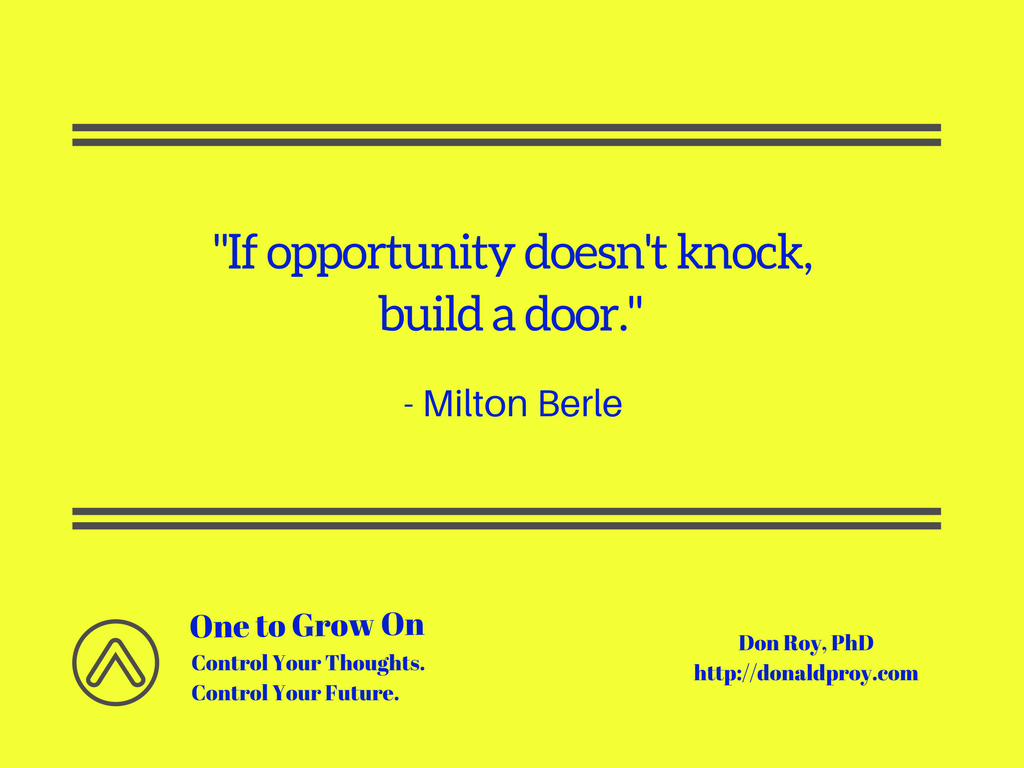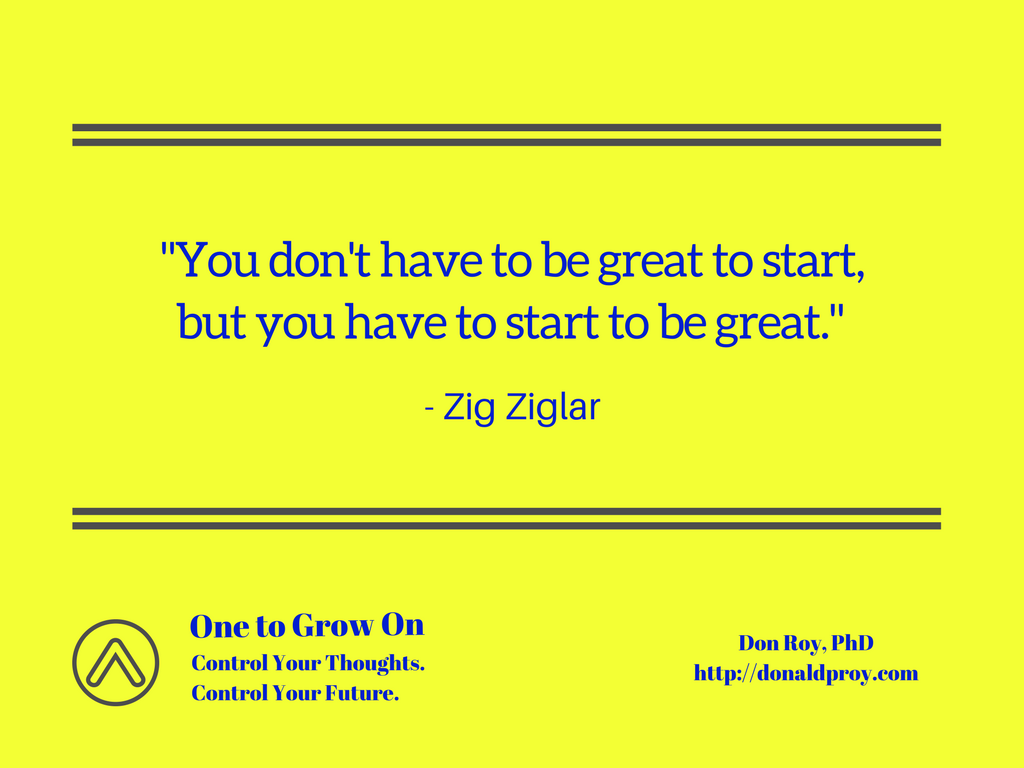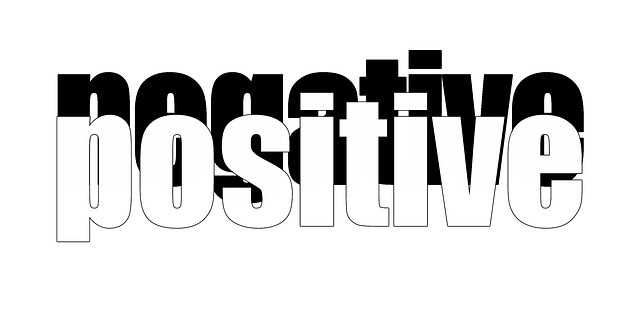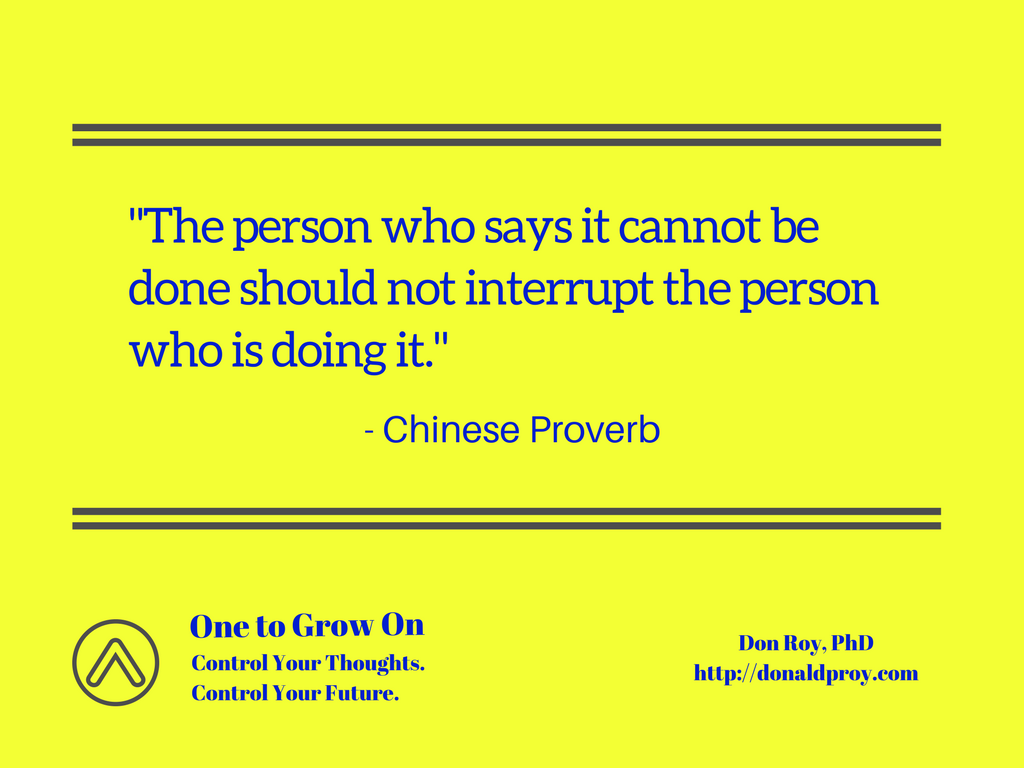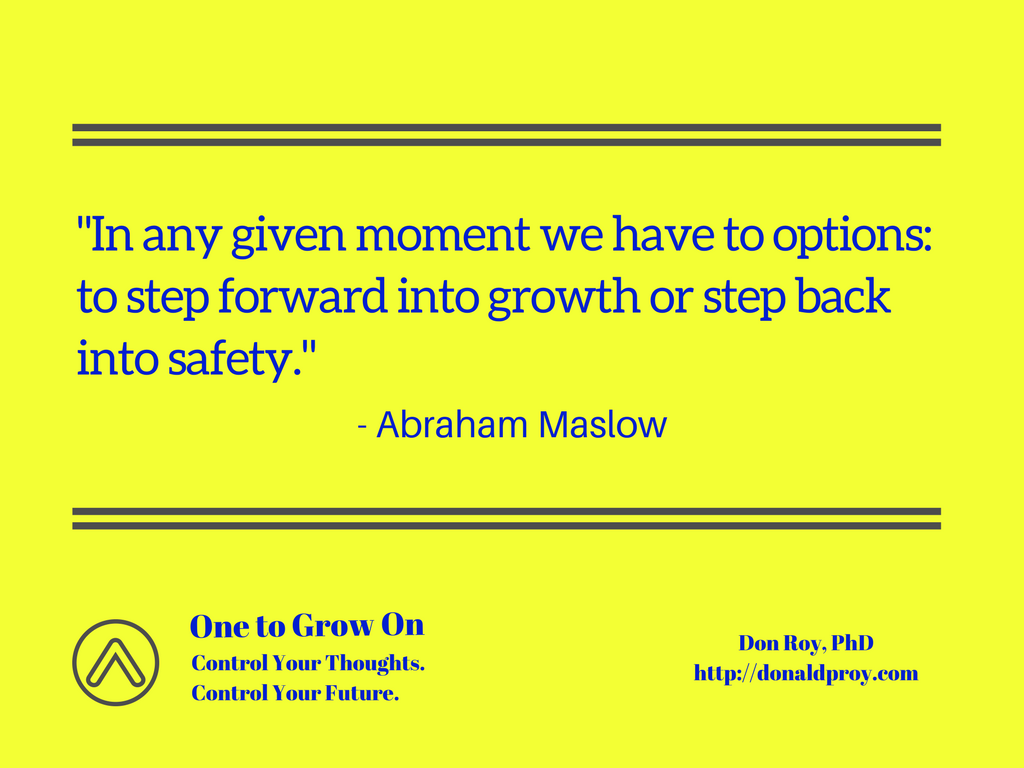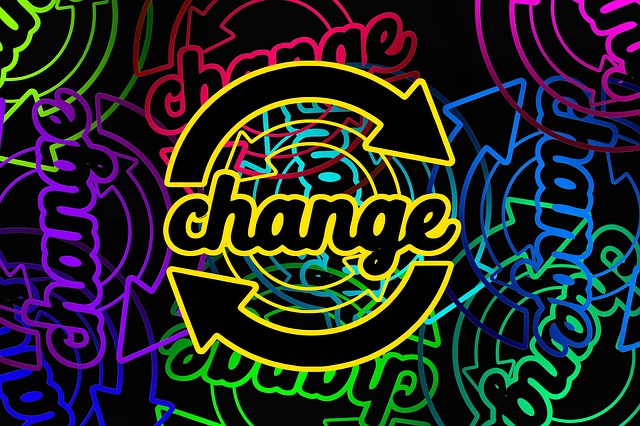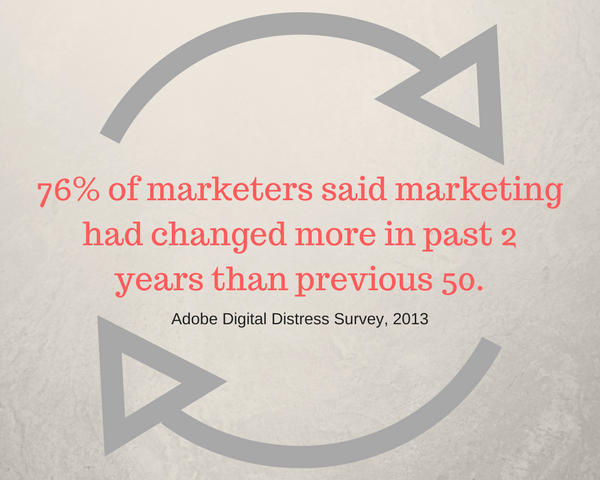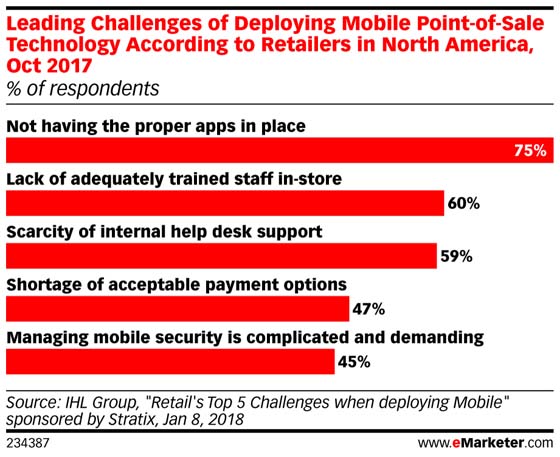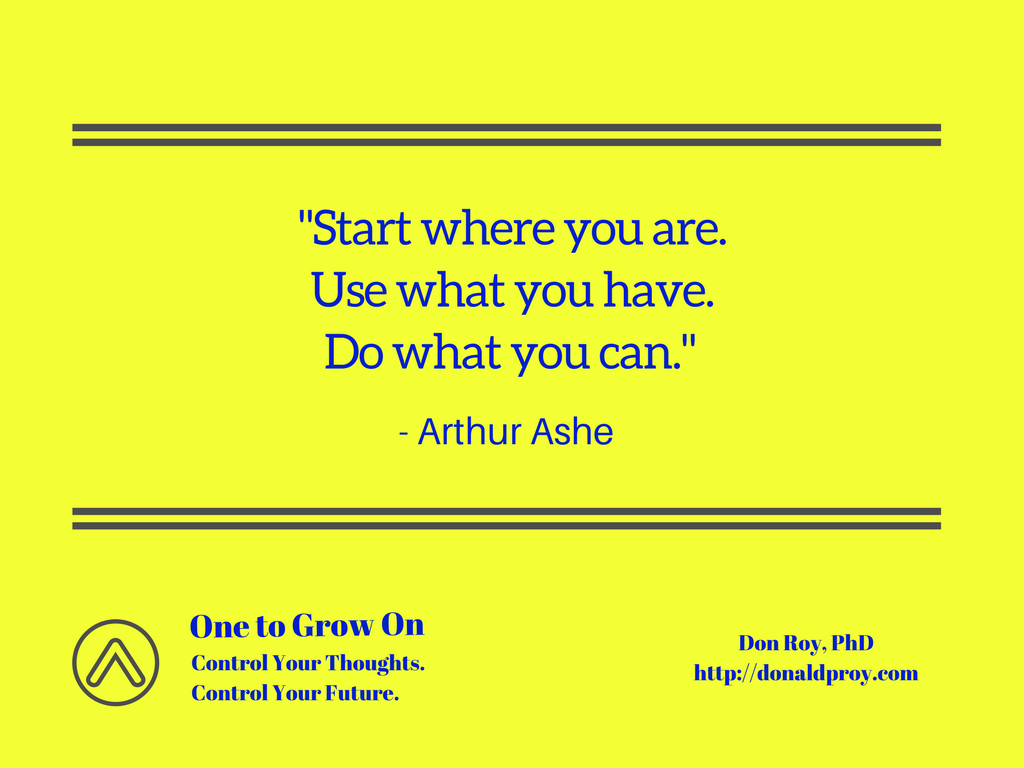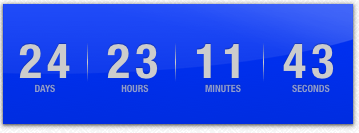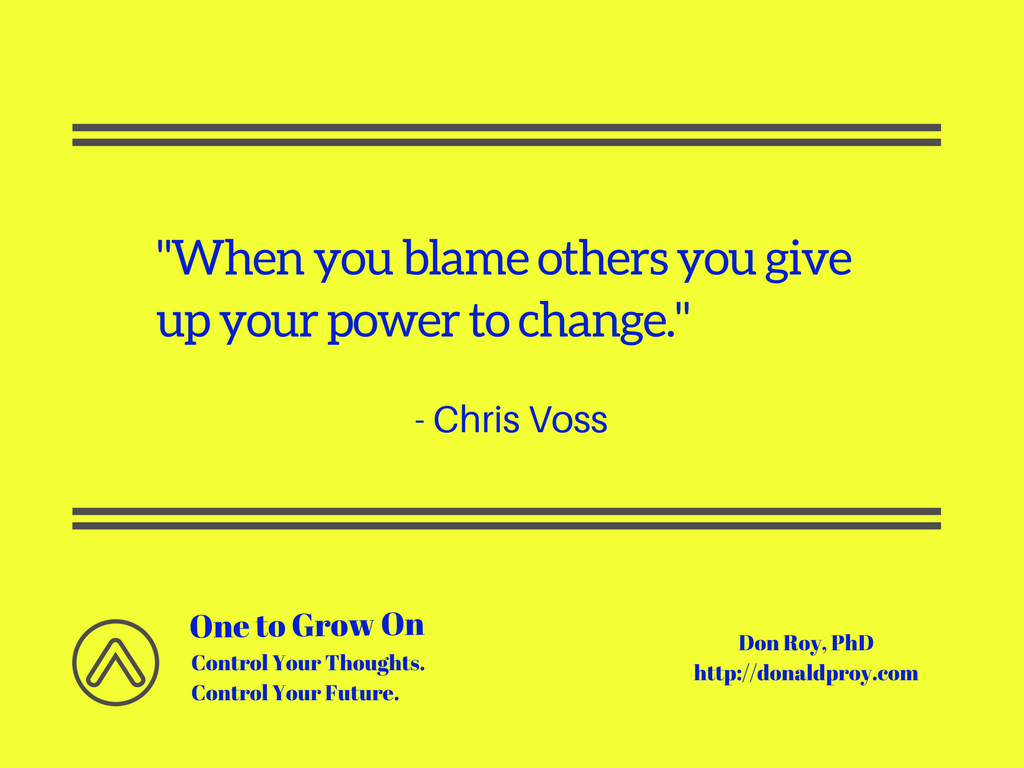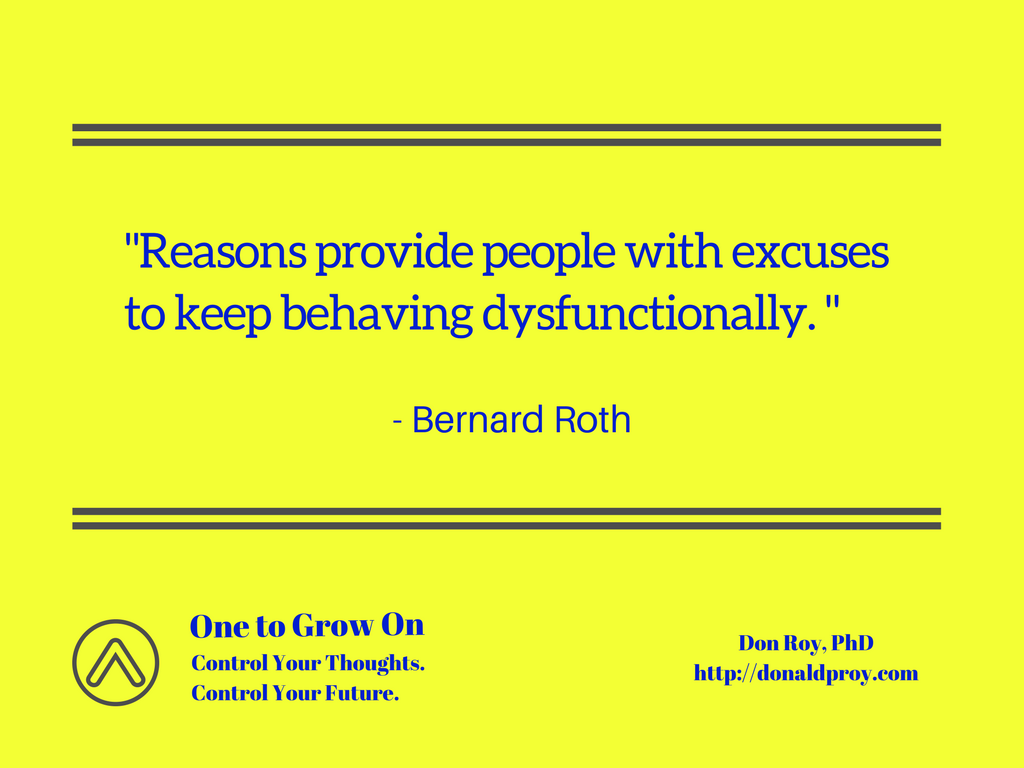Are you patient to a fault? In general, patience is a desirable trait and one from which the world could benefit if we had more of it. So, how can be patience by a liability? It holds us back when it is a reason for inaction. You have probably heard these sayings:
- “Patience is a virtue.”
- “I’m waiting for my ship to come in.”
- “Rome wasn’t built in a day.”
We can convince ourselves to sit back, have patience, and opportunity will find us sooner or later. The United States is a country built upon the idea that seizing opportunity can not only provide a living but transform lives. Do you want to wait for that possibility or proactively try to make it happen?
This week’s One to Grow On quote is about seizing opportunity. Although the bravado of the message sounds like it would have come from an entrepreneur or business leader, it is attributed to comedian Milton Berle.
It was more than a quip from Berle; he was involved in show business for 80 of his 93 years. His track record suggests he knew what he was talking about when it came to finding opportunity.
Hide or Seek?
The idea of creating our own opportunity can be at the same time thrilling and intimidating. One of the hallmarks of free market economy is the freedom to make our own way. We do not have to wait on an employer or the government to come through for us. As my friend and success expert Colby Jubenville says, “Go your own way.” In other words, we have the freedom to plot our own course. This possibility should thrill you to no end.
The thought of being able to build the door of opportunity is not always exhilarating. For many people, they are paralyzed by the prospect of taking on risk associated with a new opportunity. Instead of building the door of opportunity, we defer with reasoning such as:
- “Wait until the kids get older.”
- “The end of the year is a bad time to start.”
- “I need to save more money first.”
I am going to stop here because the reasons were starting to come in a rush to me. You get the point—we unwittingly hide from opportunity, so much so we probably would not answer even if it knocked.
Your Building Projects
Answering the knock of opportunity or building a door to open new opportunities may be overwhelming. However, there is a good chance you are more experienced than you think. Reflect on times you answered the knock or were forced to figure out new opportunities. Chances are you have done it before and succeeded.
In my case, I think about the three books I have written in the past 18 months. I did not wait for a publisher to give me its stamp of approval (believe me, I tried). However, I knew that it was no longer necessary to wait for opportunity to knock in the publishing industry. Instead of missing out on sharing my knowledge to help others, I built my own door and self-published the books.
No Wait
Are you ready to build a door? If you are tired of waiting for opportunity to knock, you should be making a list of building supplies needed to make your own door. It is not necessary to obtain permission to chase opportunity. You make the call. It may start off as a side hustle, more of a slow build rather than an extreme makeover. No matter how fast you build, just be sure to have a blueprint so that you can build the door to usher in opportunity.
Don’t wait around for opportunity to knock. It is time to build your own door so opportunity can come knocking.


